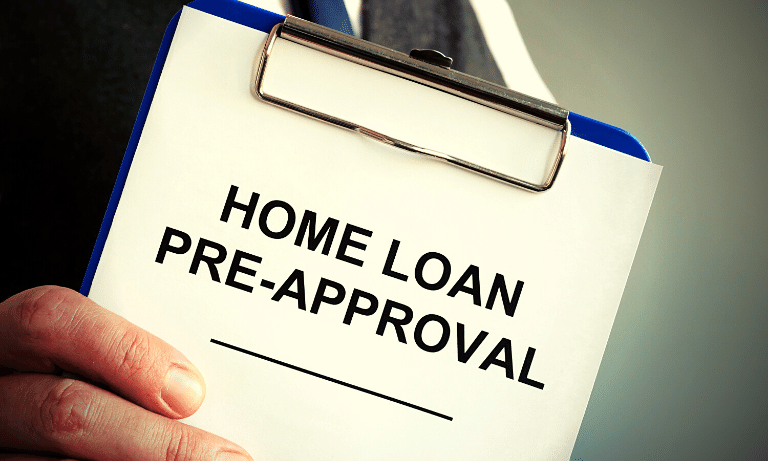There are steps to buying a home, but first, you need to get your finances in order and find the right lender for your mortgage.
The home-buying process has been broken down into 10 steps. We call it a buying-a-house checklist. There are choices to be made and things to do at each step. Some steps are very stressful, others are quite cool, and some are just plain annoying. Each step will get you closer to your goal of homeownership.
1. You must be prepared
Yes, it’s important to be financially prepared to purchase a house. (See Step 2 for more information). Are you emotionally ready to buy a house? Even though it is your starter home, you are making a significant financial commitment and planting roots.
It is important to consider your future goals. Can I buy it with a partner? If so, how are you going to spend your money? Are you willing to move for work? Do you have thoughts of starting a family? These big-picture considerations can help you decide if this is the right time for buying a house.

2. Make sure you have your finances in order
Buying a home may be the largest financial decision of your life by buying a house. Before you do, ensure that you have solid finances.
A home affordability calculator will help you calculate your budget. It takes into consideration your income, debts, and location. This calculator will show you how much your monthly mortgage payments could add up, and what your financial situation might look like as a homeowner.
This is important to keep your dreams in check. Although you might be eligible for a substantial mortgage, that doesn’t necessarily mean that you want to dedicate that much of your income to housing.
Also, check your credit score. Higher credit scores are the best way to get a lower interest rate on a mortgage. Learn about the different mortgage options available to you based on your credit score. It may be worth waiting to get homeownership if your credit score is not in good shape. Instead, do what you can to improve it.
3. Plan for the down payment
Once you have determined your financial capabilities, you can determine how much money you will need to save for a downpayment. Many homeowners choose to make smaller down payments than 20%, even though it used to be the norm.
Although a smaller down payment will require less upfront money, it will mean you’ll need to pay mortgage insurance which can increase your monthly payments. The minimum down payment depends on the type of loan that you take out.
You may be interested in state programs for first-time buyers if this is your first house or if it’s been a while since you last owned one. Many provide financial assistance, including down payment assistance.
Gift money can also be used to help increase your down payment if you have a friend, family member, or relative who can afford it. The rules regarding gift money are different depending on the loan program.
4. Make a Wish List
It’s not hard to come up with a list, both of the essentials and of the nice-to-haves, for your home. There are many details to consider when looking for a home.
Attached house or a detached house? A traditional single-family home might be the best option for you if you want a yard. If you live in an area with high density or don’t want to manage all the maintenance, a condo or townhouse may be your best option. Co-ops may also be an option in some cities. These co-ops can be cheaper than condos, but they are more difficult to finance.
Where is your ideal place? Now that you know where you want your home to be, and you have decided to stay in the state you live in, it is time to find a neighborhood. Consider safety, amenities, such as walkability, green space, or coffee shops, and costs.
This can include property taxes, and HOA fees if applicable. You should also consider the school district. Even if you do not plan on having children, the school district can have an impact on the value of your home and affect your resale prices.
Are you looking for a move-in-ready or fixer-upper property? It’s easy to buy a house that you can move into. If you live in a competitive or expensive market, you may be able to afford a bigger house or move into a more expensive neighborhood by taking over a property that is in need of some TLC. You will have to do the work and pay the money to make the property livable.
5. Find the right mortgage to suit your needs
The type of mortgage that you choose to purchase a house will affect how much you can qualify for it, including the down payment amount and the repayment terms. The right home loan will increase your chances of approval and could save you thousands over the long-term.
It is important to understand the pros and cons of each type of mortgage before you make a decision about which one to choose. These are the most common types of mortgages.
- Conventional loans are mortgages that do not come with a federal guarantee. These loans have lower down payments but require more qualifications.
- FHA loans are mortgages that are backed by the Federal Housing Administration. Although these loans are easier to get than conventional loans, they have more stringent requirements regarding mortgage insurance.
- VA loans are available from the Department of Veterans Affairs for eligible spouses and active servicemen. You can make no down payment on VA purchase loans
- Jumbo loans are mortgages that are higher than the standard lending limits and are used to finance houses. These loans usually require higher credit scores and larger down payments.
- renovation loans allow you to wrap home improvement costs into your home loan. This can allow you to borrow more money for repairs, even at low mortgage rates, and pay less interest than with a personal loan or other types of home improvement loan.
You may be able to choose between an adjustable-rate mortgage (also known as an ARM) or a fixed-rate mortgage. Fixed rates are fixed, while adjustable rates can change or increase. As you may have guessed from their names, adjustable rates are variable.
An ARM loan may have a lower interest rate than a fixed-rate loan. This allows you to purchase more property for the same monthly payments. However, rates can change over time.
The mortgage term will also be chosen. The most popular mortgage term is 30 years, although 10, 15, or 20-year terms are also available.

6. Get pre-approved for a mortgage
It’s now time to search for a mortgage lender. There are many lenders available, including large brick-and-mortar lenders with familiar names, nonbank online lenders, and smaller credit unions and local banks that might offer better service.
The first step in looking for lenders is to determine if they offer the loan type you need. If you have made a decision to get an FHA loan but they are not an FHA-approved lender then move on. Beyond that hurdle, it’s important to compare their sample rates with current mortgage rates, determine your closing costs, and compare mortgage origination fees. Most likely, this information is available on their websites. However, to obtain more numbers, a loan officer will be required.
It is important to work with a lender in order to be pre-approved for a mortgage. The lender will be able to give you accurate numbers if you have provided detailed financial information.
This includes a hard inquiry that will be reported to your credit report. The good news is that if you apply to multiple lenders at the same time, it will only count as one hard inquiry. Shopping around might help you find a lower rate.
It can take a lot of time to gather all documents needed for preapproval. It can be time-consuming to gather all the documents needed for a preapproval letter from one lender. However, you will find it easier to apply with other mortgage lenders. The benefits you’ll receive are well worth it.
You can get a Loan Estimate along with the preapproval letter that will tell you how much the lender is willing to lend you. Although this form isn’t final, it allows you to compare rates, fees, and other costs between lenders since they all use the exact same form. Pre-approval letters are typically valid for 60 to 90 days. After that, they will need to be renewed.
Pre-approval letters can also show sellers and agents that you are serious buyers who can obtain financing. This can be a significant advantage over other home shoppers. Pre-qualification is another term you may have heard.
It gives you an estimate of the amount of money that the lender will allow you to borrow, based on your self-reported data. Although the terms can be interchanged, a preapproval letter is more important. However, neither preapproval or prequalification guarantees that you will close the loan.
7. Locate a real estate agent
Now that you have been pre-approved for a mortgage and you know what type of house you want, let’s start looking for someone to help. A good real estate agent can make all the difference in the buying process, whether they are able to help you find the right house or provide moral support during the frustrating search.
Interviewing at least three agents is a smart idea. Ask friends and family who have recently purchased a home if they would recommend their agent. The one rule is this: Do not use the agent selling your home. Your agent should be able to advocate for you and negotiate on your behalf.
The seller usually pays a commission to the buyer’s agent. You may have to sign a representation agreement, which will make you pay the commission if the seller does not. Although it is rare for the seller to pay, it could happen if you are buying a property for sale by owner. However, you should still carefully read the agreement and confirm who will pay.
8. Make an offer
Have you found the right home for you? It’s time to make an offer. A realtor can help you find comparable sales information as well as any insight about the sellers that they may have gleaned from their agent (e.g. if they have already moved to a new area and are more motivated to sell). A real estate lawyer may be helpful. A lawyer may be required in certain states to assist with any real estate transaction.
You can make a counteroffer if the seller declines to accept your offer. It all depends on why they turned it down. Talk to your agent if the seller objects to your offer. You can then decide whether you will accept it or not. These negotiations are where a buyer’s agent truly earns their money.
Accepted offer? Congrats! You’re now ready to move on. This is also when you’ll likely write your first check. The earnest money is the deposit you make towards the purchase of the house. It is usually placed in an escrow account and most buyers use it to close the deal.
9. Book a home inspection
A basic home inspection will help you identify any potential problems and make recommendations for repairs. This inspection covers every aspect of the house, including the foundation and roof.
You may need to have one of the more specific types of home inspections, in addition to the standard. You may also want to inspect any features of the home, such as a pool or septic system, as these can be dangerous.
The home inspector should be chosen and paid for. You may be able to negotiate with the seller if the inspection uncovers issues that were not disclosed in the seller’s disclosures.

10. Close on your new home
It’s finally here! It can be less nerve-wracking to familiarize yourself with the standard closing documents before closing.
The closing disclosure must be provided by your lender at least three business days prior to the actual closing. It is possible to compare the closing disclosure with your Loan Estimate in order to determine if any changes have occurred. This will give you an estimate of how much cash you’ll need for closing.
You’ll conduct a final walkthrough with your agent on closing day or shortly thereafter. Although you’ll be excited, make sure that everything is as agreed.
It has been a blur of emotions and seemingly endless paperwork. But now, you have the keys to your new home.
Conclusion
Although buying a home is a wonderful experience, it can also be very stressful. This will make the experience less stressful by having a plan of attack, knowing your budget, and how to get approved.
Also, keep in mind the cost of owning a house. There are many ways to finance your home, and you can get loans of all types.
